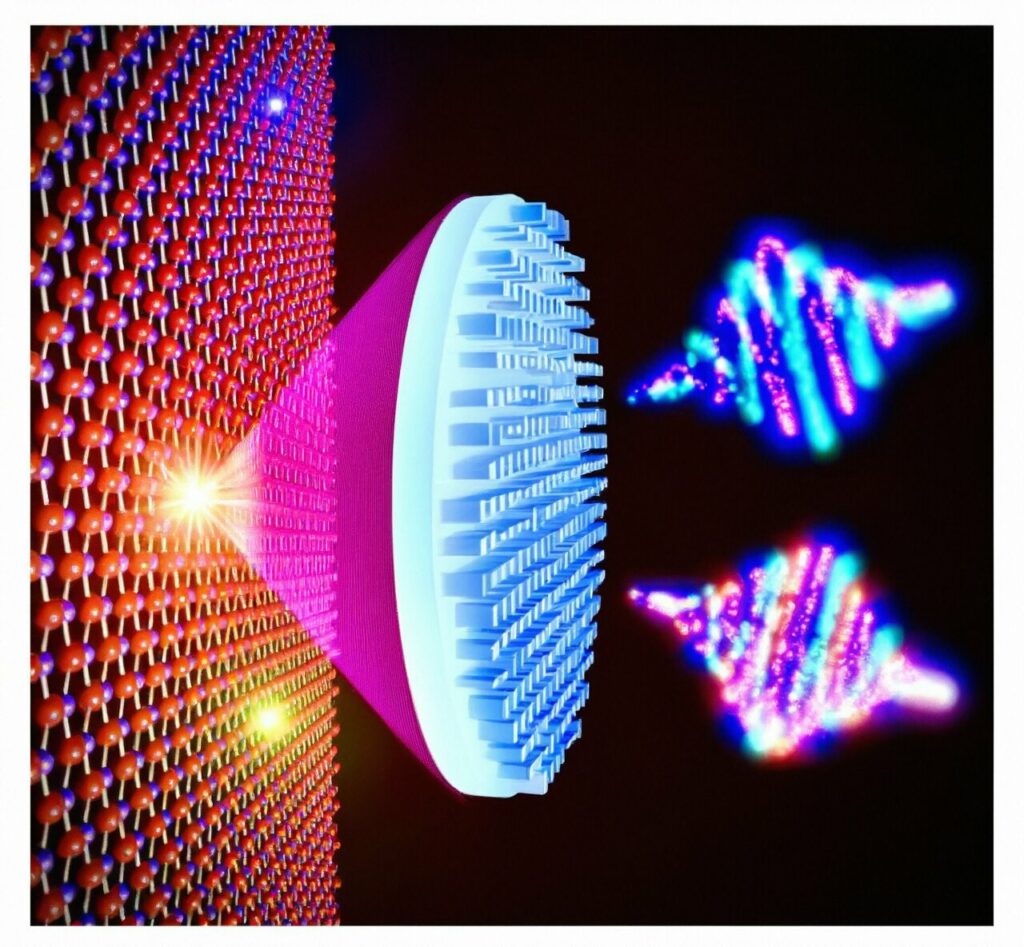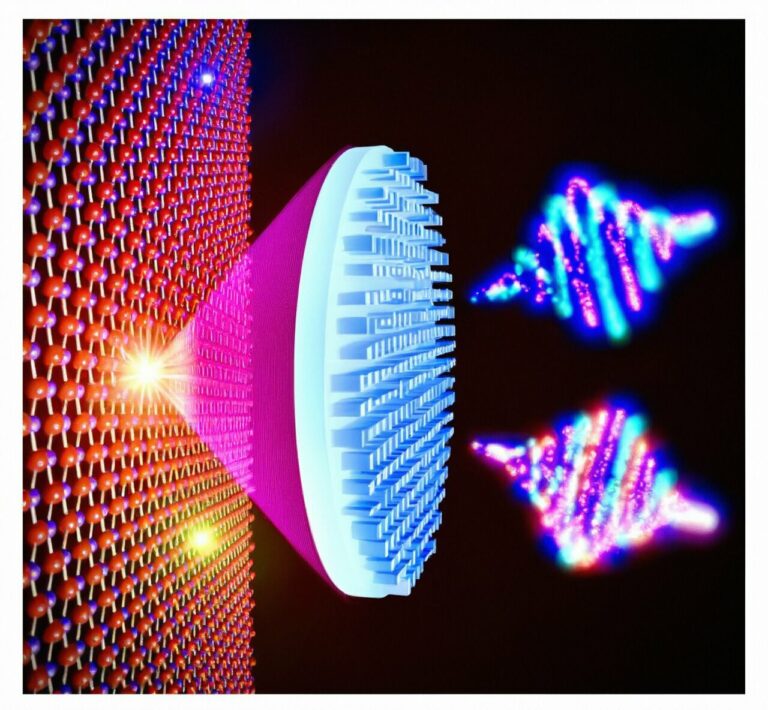“Cutting-Edge Metalens Paves the Path for Enhanced Quantum Emission Control”
Quantum emission plays a crucial role in advancing photonic quantum technologies, particularly with solid-state single photon emitters (SPEs) like hexagonal boron nitride (hBN) defects that operate at room temperature, valued for their durability and brightness. Traditional methods of collecting photons from SPEs, employing high numerical aperture (NA) objective lenses or micro-structured antennas, lack the capability to manipulate quantum emissions.
While these tools can achieve high photon collection efficiency, they necessitate multiple bulky optical elements, such as polarizers and phase plates, to structurally shape the emitted quantum light source. In a recent paper published in eLight, an international team of scientists led by Drs. Chi Li and Haoran Ren from Monash University introduced a multifunctional metalens designed to structure quantum emissions from SPEs.
The capacity to freely transform an optical beam into various spatial forms is integral for quantum light sources. Metasurfaces have revolutionized photonic design, contributing to technological breakthroughs in optical imaging, holography, LiDAR, and molecular sensing. In recent developments, the direct integration of nanoscale emitters into nanostructured resonators and metasurfaces aimed to collect and demonstrate basic tailoring of SPEs emission.
These initial efforts underscored the necessity for flat optics to advance the manipulation of quantum emission. To address this challenge, the research team engineered a multifunctional metalens, fabricated by Korean physicists Drs. Jaehyuck Jang and Trevon Badloe, along with Professor Junsuk Rho at Pohang University of Science and Technology. This metalens can concurrently customize the directionality, polarization, and orbital angular momentum (OAM) degrees of freedom. The team utilized the metalens to showcase multidimensional structuring of quantum emission from SPEs in hBN, all while operating at room temperature.

The team successfully showcased the capability to shape the directionality of quantum emission in an arbitrary manner. Additionally, they demonstrated the incorporation of diverse helical wavefronts into the metalens profile, resulting in the creation of distinct orbital angular momentum (OAM) modes across orthogonal polarizations of solid-state single photon emitters (SPEs).
This groundbreaking experimental work took place at the University of Technology Sydney and TMOS (an Australian Research Council Centre of Excellence) under the leadership of Professor Igor Aharonovich. The achieved arbitrary wavefront shaping of quantum emission across multiple degrees of freedom has the potential to unlock the full capabilities of solid-state SPEs, positioning them as high-dimensional quantum sources for advanced quantum photonic applications.
The team’s innovative technology introduces a novel platform for employing ultrathin meta-optics to perform arbitrary wavefront shaping of quantum emission across multiple degrees of freedom at room temperature. This advancement may offer fresh perspectives in the realm of quantum information science. The team envisions that manipulating photon polarizations could significantly impact quantum cryptography and enhance entanglement distribution through improved filtering. The strategic separation of polarizations is crucial for the prospective utilization of hBN SPEs in the generation of polarization-entangled photon pairs.
As the metalens undergoes future developments, it holds the potential to generate high-dimensional single-photon hybrid quantum states. Integrating structured SPE sources with a reliable transmission medium, such as optical fibers, in the future could pave the way for a quantum network characterized by enhanced information capacity, resilience to noise, and heightened security.
This article is republished from PhysORG under a Creative Commons license. Read the original article.
Do not forget to share your opinion with us to provide you with the best posts !




0 Comments